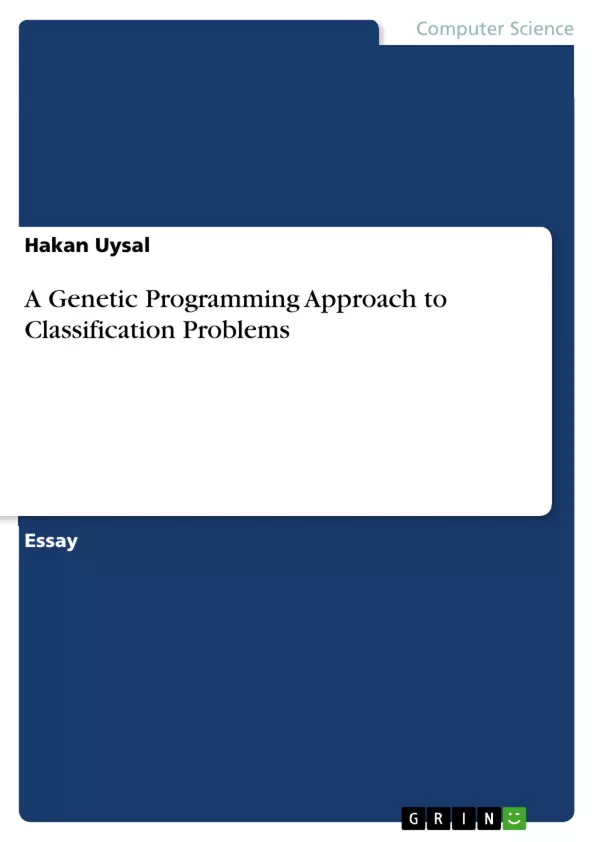Genetic Programming is a biological evolution inspired technique for computer programs to solve problems automatically by evolving iteratively using a fitness function. The advantage of this type programming is that it only defines the basics.
As a result of this, it is a flexible solution for broad range of domains. Classification has been one of the most compelling problems in machine learning. In this paper, there is a comparison between genetic programming classifier and conventional classification algorithms like Naive Bayes, C4.5 decision tree, Random Forest, Support Vector Machines and k-Nearest Neighbour.
The experiment is done on several data sets with different sizes, feature sets and attribute properties. There is also an experiment on the time complexity of each classifier method.
Inhaltsverzeichnis (Table of Contents)
- Introduction
- Classification
- Decision Trees
- Naive-Bayes
- Random Forest
- Support Vector Machines
- K Nearest Neighbours
- Genetic Algorithm
- Genetic Programming
- Experiment
- Data Sets
- Tools and Frameworks
- Compared Algorithms
- Genetic Programming Classifier
- Evaluation
- Results
- Accuracy
- Adult Data Set
- Accuracy
Zielsetzung und Themenschwerpunkte (Objectives and Key Themes)
This paper aims to compare the performance of various text classification algorithms, including a novel Genetic Programming (GP) classifier, on different datasets. The experiment investigates the impact of data size, feature types, and the effectiveness of GP in optimizing decision tree construction.
- Text classification methods and their effectiveness in different scenarios
- The influence of data size and feature types on classifier performance
- Genetic Programming as a technique for optimizing decision tree construction
- Comparative analysis of GP classifier against conventional methods like Naive Bayes, C4.5, Random Forest, SVM, and kNN
- Evaluation metrics for classifier performance, including accuracy, precision, recall, and ROC area
Zusammenfassung der Kapitel (Chapter Summaries)
- Introduction: This chapter provides an overview of text classification, its importance in data mining, and the common algorithms used. It introduces Genetic Programming (GP) as a method inspired by biological evolution to solve computer-related problems.
- Experiment: This chapter details the experimental setup, including the datasets used, tools and frameworks employed, and the specific algorithms compared. It focuses on the GP classifier and its implementation for optimizing decision tree construction.
- Results: This chapter presents the performance evaluation of the different classifiers on the chosen datasets. It analyzes the accuracy, precision, recall, and ROC area of each algorithm, highlighting the strengths and weaknesses of each method.
Schlüsselwörter (Keywords)
Text classification, data mining, Genetic Programming, decision tree, Naive Bayes, Random Forest, Support Vector Machines, kNN, accuracy, precision, recall, ROC area, UCI machine learning repository, Weka, Rapidminer, Orange.
- Quote paper
- Hakan Uysal (Author), 2013, A Genetic Programming Approach to Classification Problems, Munich, GRIN Verlag, https://www.grin.com/document/333781



